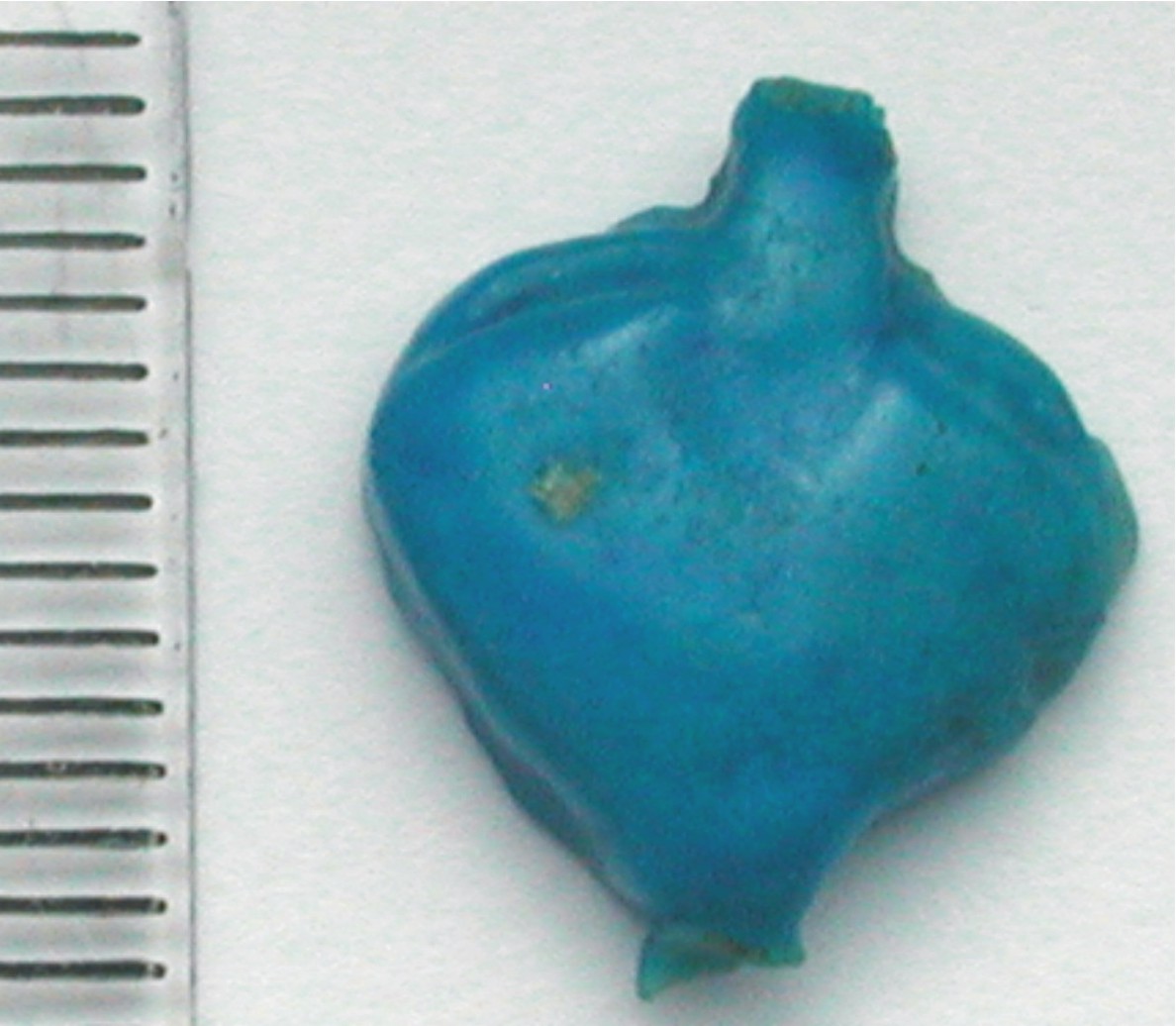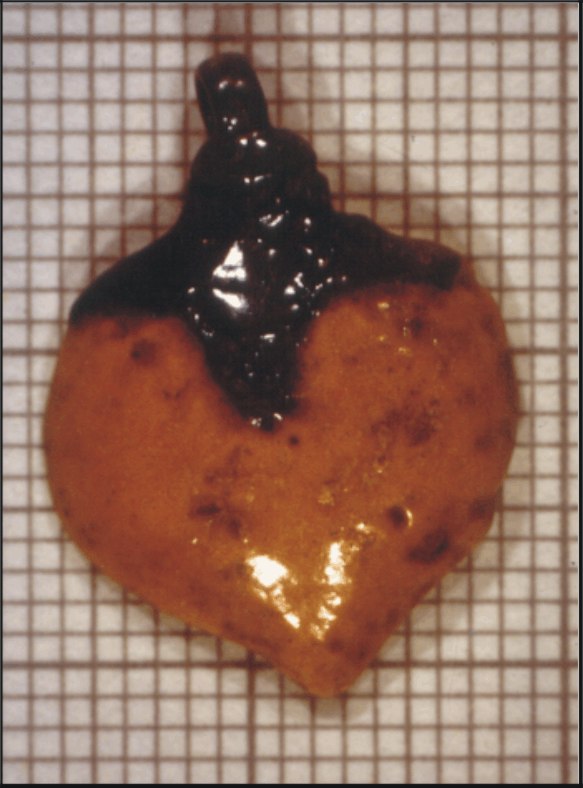Mandrake
Mandrake
 The mandrake appears to have had erotic connotations and was particularly popular in the 18th Dynasty. It is depicted in tomb paintings being held in the hands of women at drinking parties, in a similar way to the depictions of the lotus flower.
The mandrake appears to have had erotic connotations and was particularly popular in the 18th Dynasty. It is depicted in tomb paintings being held in the hands of women at drinking parties, in a similar way to the depictions of the lotus flower.
We have three mandrake amulets in the Egypt Centre, of which at least one (W1228b depicted below) comes from Amarna.
Györy (1998, 498) states that in the North Suburb of Amarna every 5th vegetable amulet was a mandrake with an attachment for a bead above and below.

The Egypt Centre also has wall plaster from Amarna depicticing mandrake fruit.
References
Bosse-Griffiths, K. 2001. The Fruit of the Mandrake in Egypt and Israel. In Griffiths, J.G. Amarna Studies and Other Selected Papers. Fribourg: University Press Fribourg, 82-96.
Györy, H. 1998. Remarks on Amarna Amulets in C.J. Eyre, ed. Proceedings of the 7th International Congress of Egyptologists September 1995. Leuven: Peeters, 497-507.